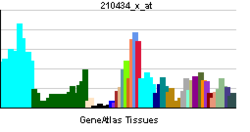"PTCH1 is a member of the patched gene family and is the receptor for sonic hedgehog, a secreted molecule implicated in the formation of embryonic structures and in tumorigenesis. This gene functions as a tumor suppressor. The PTCH1 gene product, is a transmembrane protein that suppresses the release of another protein called smoothened, and when sonic hedgheog binds PTCH1, smoothened is released and signals cell proliferation." wikipedia.
POLIZIO ET AL
The vertebrate Hedgehog (Hh) pathway has essential functions during development and tissue homeostasis in normal physiology, and its dysregulation is a common theme in cancer. The Hh ligands (Sonic Hh, Indian Hh, and Desert Hh) bind to the receptors Patched1 and Patched2, resulting in inhibition of their repressive effect on Smoothened (Smo). Smo is a seven-transmembrane protein, which was only recently shown to function as a G protein–coupled receptor (GPCR) with specificity toward the heterotrimeric guanine nucleotide-binding protein Gi. In addition to activating Gi, Smo signals through its C-terminal tail to inhibit Suppressor of Fused, resulting in stabilization and activation of the Gli family of transcription factors, which execute a transcriptional response to so-called "canonical Hh signaling."
WHEN YOU TALK ABOUT ZINC-FINGER YOU KNOW YOU ARE TALKING ABOUT HISTONE MODULATION AND DIRECT DNA INTERACTION, ALL OCCURING MOSTLY THE EPIGENETIC ZONE MOSTLY! THEREFORE THIS COULD EFFECT EVEN THE LEUKEMIAS!
THE CRBCM IS TAKING A CLOSER LOOK!
"Gli regulation by the opposing activities of Fused and Suppressor of Fused
Hedgehog (Hh) proteins are secreted factors that control cell proliferation
and cell-fate specification1. Hh signalling is mediated in vertebrates
by the Gli zinc-finger transcription factors (Gli1, Gli2 and Gli3) and in
Drosophila by the Gli homologue Cubitus interruptus"
OTHER GENES IMPLICATED!
OTHER GENES IMPLICATED!
PTCH1 gene
WNT3A
IRF6
GLI
TGF-beta
TrkC: Neurotropin -Receptor
AND THE DANCE OF GENES CONTINUE!
AND THE DANCE OF GENES CONTINUE!


 1-induced
apoptosis. These activities were dependent on the N-terminal processing
and induced by wild-type JTB but not by a mutant resistant to cleavage.
These findings raised the possibility that aberration of JTB in
structure or expression induced neoplastic changes in cells through
dysfunction of mitochondria leading to deregulated cell growth and/or
death."
1-induced
apoptosis. These activities were dependent on the N-terminal processing
and induced by wild-type JTB but not by a mutant resistant to cleavage.
These findings raised the possibility that aberration of JTB in
structure or expression induced neoplastic changes in cells through
dysfunction of mitochondria leading to deregulated cell growth and/or
death."